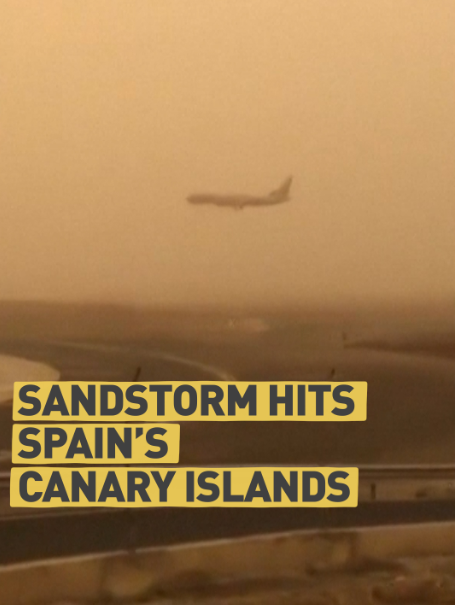
(Photo: CGTN)
Airports were closed and tourists were left stranded on the Canary Islands after a sandstorm from the Sahara hit the Spanish archipelago over the weekend.
Strong winds carrying red sand from the Sahara shrouded the tourist hotspot located off the coast of Morocco.
Spanish airport authorities said flights to and from the islands of Gran Canaria and Tenerife were canceled or diverted.
Spanish airport operator AENA was forced to close all eight airports in the Canaries, three in Gran Canaria and Tenerife as well as five others, saying that visibility was "very low."
The regional government of the islands declared a state of alert and advised people to remain indoors, closing doors and windows, and avoid non-essential travel.
Spain's national weather service warned that winds of up to 120km/h were set to batter the Canaries until Monday.
Unusually strong winds also hindered efforts to contain wildfires that spread across Gran Canaria and Tenerife as temperatures soared above 30 degrees.
The winds prevented water-dropping aircraft from putting out fires near Tasarte village in southwest Gran Canaria, which scorched around 300 hectares of land and forced 500 people to be evacuated
In the neighboring island of Tenerife, roughly 1,000 locals and tourists were evacuated as a precaution, while attempts were made to tackle blazes that broke out near built-up areas in six municipalities on the north of the island.
"We are facing a completely unusual situation. It is the first time that so many fires have broken out in so many municipalities at the same time, and in different places," Tenerife's head of the local government Pedro Marin told a news conference.
The Canary Islands, located off the coast of Morocco in the Atlantic Ocean, include Tenerife, Fuerteventura, Gran Canaria, Lanzarote, La Palma, La Gomera, El Hierro, and La Graciosa. The islands are popular with European tourists seeking winter sunshine.
The archipelago received 13.1 million foreign visitors last year, according to national statistics institute INE figures, making it Spain's third most visited region.


